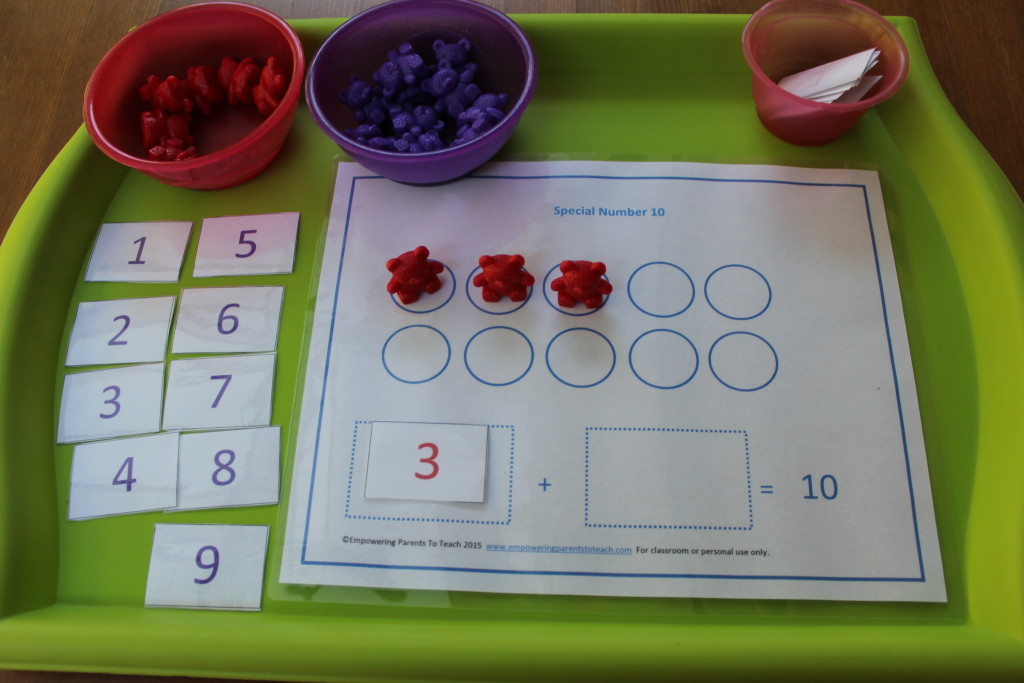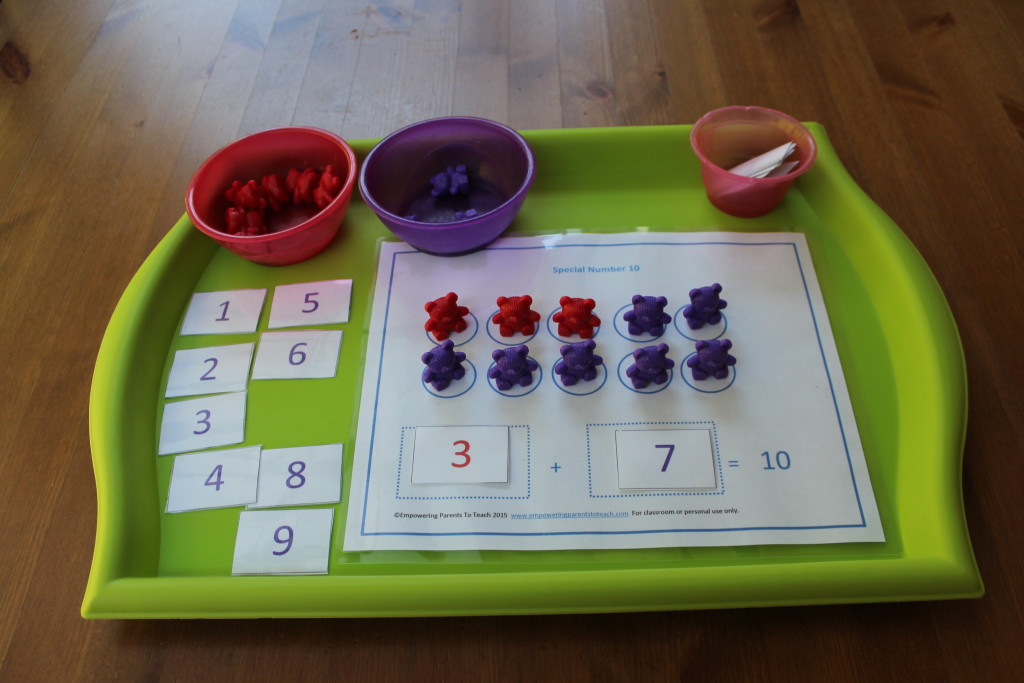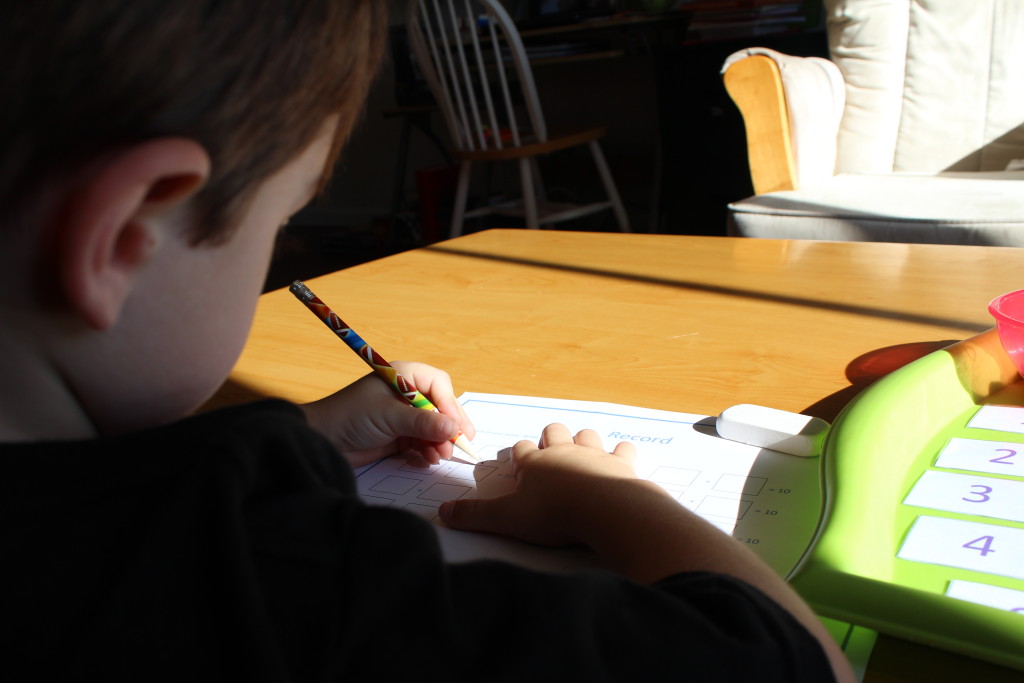Hands-on Math: Make Ten (with free printable materials)
Ten is a special number. Because we use a base ten math system, it is important for kids to have a good understanding of ‘ten’. What does ten look like? What are its parts? For parents, I have included links at the bottom of this post to three articles about the importance of ten. I encourage you to read them before you try the activity with your child. They are incredibly informative and can help you guide your child at home.
A good working knowledge of ‘ten’ helps students with mental math.
One way teachers help students gain this ten knowledge is with ten frames and dot cards. Both of these visual devices help students conceptualize the number ten. Ten frames typically look like a small 5 by 2 chart with five squares on the top and five on the bottom, all conjoined. Dots cards are simply different arrangements of dots on a piece of paper or flashcard.
In this activity, students will use a ten frame variation. The framework I created uses the same 5 by 2 arrangement. Instead of conjoined squares, I used circles. Think of it as a merger of the ten frame squares and the dot cards.
Materials-
1. Dot frame (laminate if possible)
2. Number cards- two sets in two different colors (laminate if possible)
3. Record Page
4. Bear counters or other small object (preferably using two different colors)
5. Pencil
6. Small bowls for bears and one set of numbers
Dot frame, number cards, and record page can be printed FREE from here: Make Ten Printables.
Activity-
1. Present your child with the materials. Show him or her the materials and count the circles together. Let your child know that s/he is going to use these materials to figure out what numbers can add together to make the number ten.
2. Have your child choose a number from the bowl.
3. Place the number in the first dashed rectangle.
4. Have your child place the corresponding number of bears in the circles starting on the top left, filling the circles from left to right, top to bottom. *Note: The bears should all be the same color to distinguish this set of bears from the set they will use in another step.
5. Have your child fill in the empty circles with a second color of bears.
6. Have your child count or subitize (quickly recognize the number quantity without the need to count) the second group of bears.
7. Have your child place the corresponding numeral in the second dashed rectangle.
8. Have your child record the number combination on his or her record sheet.
Use math language. The two numbers that your child is finding are called addends. In this example, the 3 and 7 are addends.
9. Continue this procedure until all of the number cards have been used. Keep recording!
Extension:
Once your child is ready to move past the concrete stage of manipulating the math bears, you can take away the bears and practice using just the number cards. Line up one set of numbers. Have your child pull out a number from the cup and match it with the addend that would make ten.
Is it getting easy? Your child may have the ten pairs memorized. Now you can simply give your child a number orally and ask what number s/he would add to make ten. This will only take a minute or two. Ask your child to do this every day until you think she or he has them solidly memorized. This will make mental math easier ![]()
Don’t forget to read these articles first:
1. Number Sense Series: Developing Early Number Sense from NRICH (click here)
2. Number Sense Series: A Sense of ‘ten’ and Place Value from NRICH (click here)
3. Ten Frames and Dot Cards from K-5 Math Teaching Resources (click here) Great game suggestions too!
Remember, have fun together and follow your child’s lead! It’s ok if your child does things a little differently. With the knowledge you’ve learned from these articles you will know what is important and why. Focus on the big picture. There are many paths to understanding, trust your child and trust yourself.
Linked to:
 













Michelle
Knowing how to make a 10 is so important! It’s a good use for all those counting bears, too!